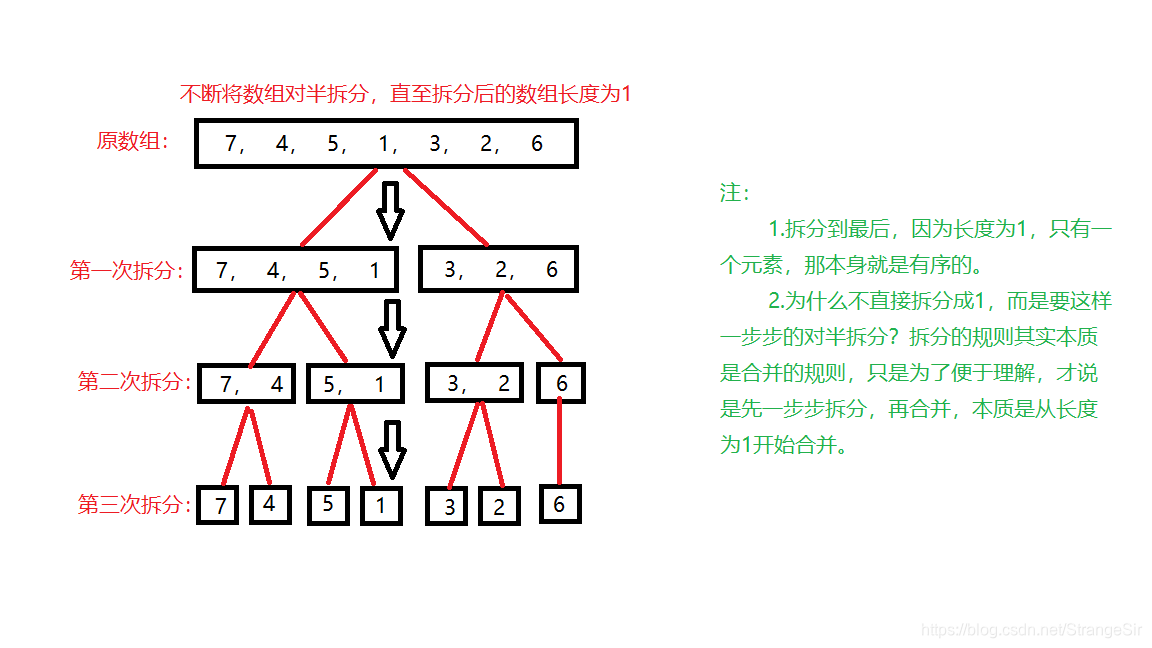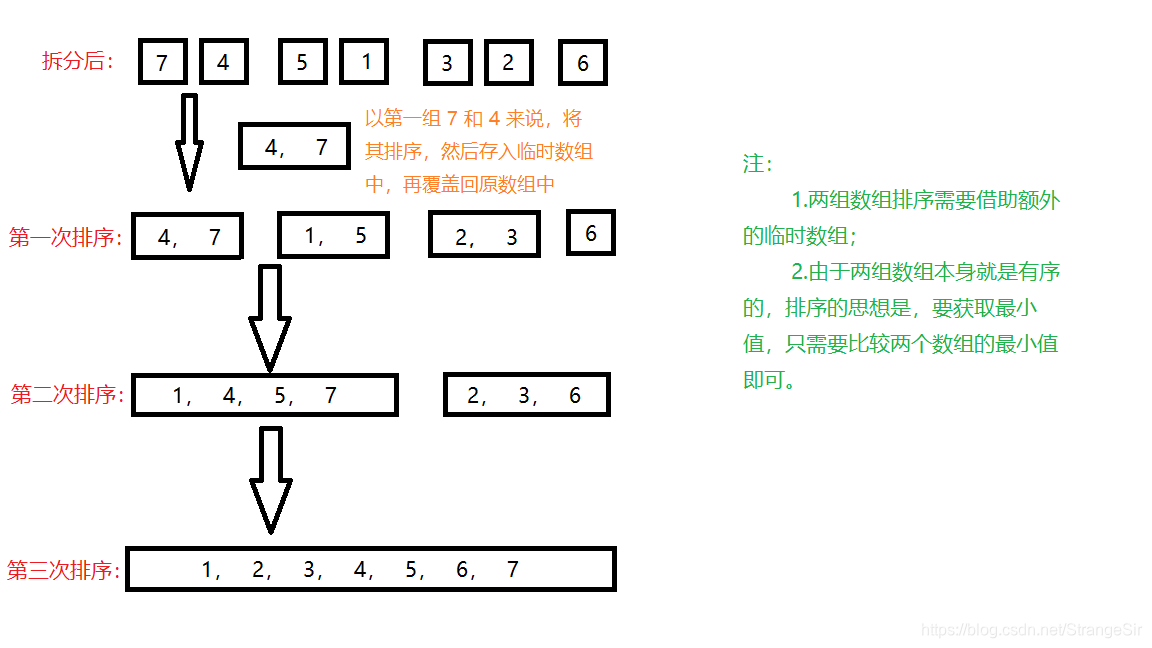思路


代码
// 归并排序
public static void mergeSort(Integer[] arr) {
mergeSort(arr, new int[arr.length], 0, arr.length-1);
}
// 归并排序
private static void mergeSort(Integer[] arr, int[] temp, int start, int end) {
if (start < end) {
int mid = (start + end) / 2;
mergeSort(arr, temp, start, mid);
mergeSort(arr, temp, mid + 1, end);
merge(arr, temp, start, mid, end);
}
}
/**
* 归并排序,合并两个数组
* @param arr 原数组
* @param temp 临时数组
* @param start 准备排序的左边数组的起始索引
* @param mid 准备排序的左边数组的结束索引
* @param end 准备排序的右边数组的结束索引
*/
private static void merge(Integer[] arr, int[] temp, int start, int mid, int end) {
if (start >= end) {
return;
}
int start1 = start;
int end1 = mid;
int start2 = mid + 1;
int end2 = end;
int len = end2 - start1 + 1;
// 将两段数组合并排序到临时数组中
for (int i = 0; i < len; i++) {
if (start1 > end1) {
temp[i] = arr[start2++];
continue;
}
if (start2 > end2) {
temp[i] = arr[start1++];
continue;
}
if (arr[start1] < arr[start2]) {
temp[i] = arr[start1++];
} else {
temp[i] = arr[start2++];
}
}
// 将临时数组的数据覆盖回原数组
for (int i = start; i <= end; i++) {
arr[i] = temp[i-start];
}
}
总结
归并排序体现了一种分治的思想,将数组的排序拆分成若干个长度为1的数组的组合排序,再将组合好的继续组合。这同样用到了递归,在数组长度较大时,要注意堆栈溢出的问题,解决思路同样是在拆分到一定大小时,选择使用其它的排序方式,减少递归次数。







 本文深入讲解了归并排序算法的实现原理,通过递归将数组拆分为更小的部分进行排序,然后合并已排序的部分。文章提供了详细的代码示例,展示了如何使用临时数组进行元素比较和合并,最终实现数组的完全排序。
本文深入讲解了归并排序算法的实现原理,通过递归将数组拆分为更小的部分进行排序,然后合并已排序的部分。文章提供了详细的代码示例,展示了如何使用临时数组进行元素比较和合并,最终实现数组的完全排序。
















 1183
1183

 被折叠的 条评论
为什么被折叠?
被折叠的 条评论
为什么被折叠?








